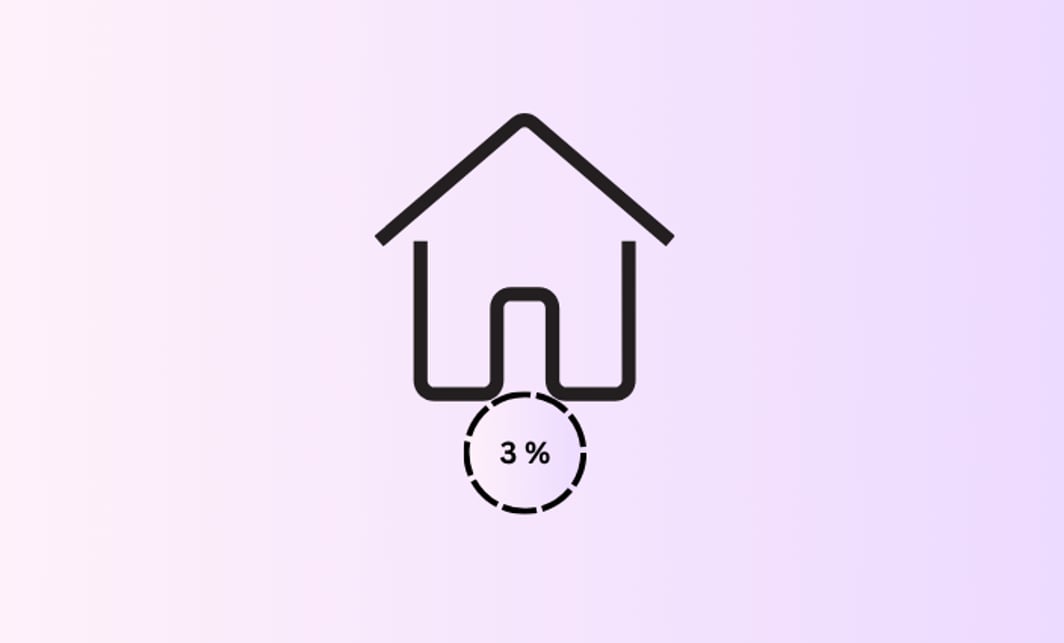Introduction to Government Grants Schemes for First Home Buyers
Overview of First Home Owner Grants (FHOG) and Stamp Duty Concessions
For many Australians, purchasing their first home is a significant milestone but also a daunting financial hurdle. To ease this transition, both federal and state governments provide a range of financial assistance programs, primarily the First Home Owner Grant (FHOG) and stamp duty concessions. These schemes aim to reduce upfront costs associated with home buying, thereby improving housing accessibility and affordability for first home buyers.
The First Home Owner Grant (FHOG) is a one-time payment designed to assist eligible first home buyers with the purchase or construction of new residential properties intended as their principal place of residence. The grant amount and eligibility criteria vary by state and territory, reflecting local housing market conditions and policy objectives. For example, South Australia offers up to $15,000 for eligible applicants, while Queensland provides $30,000 for new homes valued under $750,000.
Stamp duty concessions or exemptions further reduce upfront transaction costs by lowering or waiving the transfer duty payable on the purchase of a first home. These concessions also differ across states, with some, like New South Wales (NSW), offering increased exemption thresholds and modified residency requirements as of 2023 to enhance affordability. Other states like Queensland and the Australian Capital Territory (ACT) have implemented similar concessions targeting both metropolitan and regional buyers, often coupled with other grants to maximise financial assistance.
Together, these schemes form a multi-layered support system that first home buyers can strategically combine to reduce initial purchase costs, minimise deposit requirements, and improve access to the housing market.
Context of housing affordability and market challenges
Despite the availability of these grants and concessions, housing affordability in Australia remains a significant challenge. In recent years, rising property prices, limited housing supply, and increasing mortgage interest rates have combined to create substantial barriers for first home buyers.
In 2023, the average mortgage loan for owner-occupiers reached approximately $624,000, with scheduled repayments increasing by up to 60% compared to previous years. This increase reflects interest rate rises totalling 125 basis points on average, exacerbating affordability pressures. Additionally, it takes the average prospective homeowner about 10 years to save a 20% deposit, and only 13% of homes sold are affordable to median-income households.
Supply shortages further compound affordability issues. In 2024, new housing completions were near a decade low at 177,000 dwellings, insufficient to meet ongoing demand. This imbalance inflates prices and limits the effectiveness of grants alone to enable market entry. Critics argue that while FHOG and stamp duty concessions provide important relief, they do not address fundamental supply constraints, and in some cases, may contribute to price inflation by increasing buyer demand without matched supply growth.
Hence, government grants must be understood within this broader market context, as part of a comprehensive approach including supply-side reforms, financial literacy, and sustainable housing strategies to truly improve first home buyer outcomes.
Variations and Eligibility Criteria Across Australian States and Territories
State-Specific variations in FHOG amounts and stamp duty concessions
Australia's federated system means that each state and territory administers its own FHOG and stamp duty concessions, resulting in varied grant amounts, eligibility rules, and concession thresholds.
- South Australia: Offers a $15,000 FHOG for new homes without price caps and provides stamp duty concessions also focused on new builds.
- Queensland: Provides a $30,000 FHOG for homes valued under $750,000 and increased transfer duty concession thresholds to $700,000 for established homes and $350,000 for vacant land, aiming to assist approximately 10,000 buyers.
- New South Wales (NSW): Expanded the First Home Buyers Assistance Scheme in 2023 with increased exemption and concessional thresholds, including for new and existing homes, with residency requirements for buyers.
- Australian Capital Territory (ACT): Offers extended stamp duty concessions and exemptions, including targeted support for vulnerable groups such as people fleeing domestic violence, reflecting social welfare goals.
- Victoria: Provides full stamp duty exemptions for homes up to $600,000 and concessions up to $750,000, with FHOG eligibility linked to contracts from 2017 onward.
These differences reflect local market conditions, affordability challenges, and policy priorities. Some states have also integrated recent amendments to better target assistance and align with income thresholds or property price caps.
Eligibility requirements and administrative procedures
Eligibility for FHOG typically requires applicants to be Australian citizens or permanent residents, aged 18 or over, purchasing or building their first home to be used as their principal place of residence for a minimum period (usually 6-12 months). Property value caps and contract dates affect eligibility, as do ownership history rules — for example, South Australia excludes applicants who have lived in a residential property for six months or more since July 2000.
Stamp duty concessions have their own set of criteria, including property price thresholds, buyer residency, and sometimes income caps. Application procedures generally involve submitting proof of eligibility (such as contracts, identification, and residency evidence) to the relevant state revenue office, either at or shortly after settlement or during the building phase.
These administrative variations can impact the ease with which buyers access benefits. In NSW, for example, stricter eligibility and a 12-month ownership requirement introduced in recent legislative amendments may restrict uptake but aim to ensure targeted support.
Impact of eligibility and procedural differences on uptake rates
Uptake rates of FHOG and stamp duty concessions vary according to eligibility complexity and procedural accessibility. States with more generous or straightforward schemes, such as South Australia and Queensland, have reported more resilient first home buyer demand, even amidst broader market challenges.
Conversely, stricter eligibility or more complex application processes can deter applicants or delay access to funds, impacting the effectiveness of these schemes. Research suggests that simplifying application procedures, increasing awareness, and aligning eligibility with local market realities are essential to improve uptake among eligible buyers.
Financial Strategies and Combined Use of Grants and Concessions
Combining FHOG, stamp duty concessions, and the first home guarantee
First home buyers can strategically layer various grants and concessions to reduce upfront costs and deposit requirements substantially. For example, in Queensland, a buyer purchasing a $500,000 home with a 5% deposit may access a combined total of up to $55,778 in government support, composed of the $30,000 FHOG, an $8,750 stamp duty exemption, and approximately $17,028 saved on lender’s mortgage insurance through the national Home Guarantee Scheme (HGS).
The First Home Guarantee (FHBG) enables eligible buyers to purchase with as little as a 2–5% deposit without paying lenders mortgage insurance, supported by government guarantees to lenders. This guarantee can be combined with FHOG and stamp duty concessions, making home ownership more attainable.
Buyers are encouraged to consult mortgage brokers who specialise in first home buyer loans to navigate these combined benefits effectively, ensuring compliance with eligibility and maximising financial assistance.
Utilising the First Home Super Saver Scheme (FHSSS) for Deposit Optimisation
The First Home Super Saver Scheme (FHSSS) allows buyers to make voluntary contributions to their superannuation accounts, which can later be withdrawn to boost a home deposit with concessional tax treatment. Contribution limits are $15,000 per financial year, with a total cap of $50,000.
Buyers can integrate FHSSS withdrawals with state grants and the FHBG to optimise deposit savings, reducing reliance on high-deposit loans or paying lenders mortgage insurance. Despite its effectiveness, many buyers are unaware of or underutilise FHSSS benefits, highlighting the need for financial education and broker assistance.
Budgeting Beyond Grants: managing stamp duty, loan repayments, and hidden costs
While grants reduce initial expenses, first home buyers must budget comprehensively for additional costs:
- Stamp duty varies by state and can amount to tens of thousands of dollars without concessions (e.g., ~$18,000 on a $500,000 home in NSW).
- Loan repayments depend on loan size, interest rates, and terms; rising rates have increased repayment burdens significantly.
- Other costs include legal fees, inspections, insurance, maintenance, and potential lenders mortgage insurance if deposits are below 20%.
Financial literacy and professional advice are critical for buyers to avoid overstretching finances and to select loan products with competitive rates and terms.
Common pitfalls and financial risks in using government grants
Buyers should be cautious of:
- Hidden costs beyond grants.
- Market inflation effects, where increased buyer purchasing power can push prices higher.
- High loan-to-value ratios (LVRs) resulting from low deposits, increasing financial vulnerability in rising interest rate environments.
- Complex eligibility criteria leading to missed opportunities or delays.
Engaging with mortgage brokers and financial advisors helps mitigate these risks through informed planning and compliance.
Impact of Government Grant Schemes on Housing Market Dynamics
Effects on housing demand, prices, and affordability
Government grants and concessions stimulate housing demand by lowering entry barriers. However, in markets constrained by limited housing supply, this increased demand can translate into higher prices, partially offsetting affordability gains.
Economic analyses indicate that while these grants support first home buyer participation, they have not reversed the general affordability decline, particularly in major cities with supply shortages.
Regional versus Metropolitan distribution of first home buyer activity
Recent policy adjustments, such as Queensland's increased stamp duty concession thresholds and the introduction of the Regional First Home Buyer Guarantee (RFHBG), aim to balance first home buyer activity between metropolitan and regional areas.
RFHBG supports buyers in regional areas with low deposits and income caps, facilitating entry into less expensive markets and diversifying geographic demand. Uptake data shows growing participation in regional schemes, although awareness and application complexity remain barriers.
Influence on Housing Supply and New Construction
Some government grants target new housing construction to stimulate supply. For example, increased funding for community housing providers and incentives for build-to-rent projects have boosted affordable housing stock.
However, despite these efforts, new housing completions remain insufficient to meet demand, limiting price stabilisation and affordability improvements.
Geographic impact on housing developments and market dynamics
Grants and concessions have influenced migration patterns and housing development geography. The COVID-19 pandemic accelerated moves to regional and fringe areas, with grant schemes supporting this trend.
Nonetheless, social housing growth has lagged population increases, and supply constraints persist in both metropolitan and regional markets, underscoring the need for integrated housing strategies beyond financial incentives.
Promoting Accessibility, Awareness, and Sustainable Housing Practices
Improving awareness and accessibility of grants and concessions
Maximising the impact of grant schemes requires effective communication and simplified processes. Governments should engage trusted intermediaries such as mortgage brokers, real estate agents, and community organisations to educate eligible buyers.
Targeted outreach campaigns for vulnerable and disadvantaged groups improve equitable access, helping close participation gaps [5].
Digital tools and platforms streamlining grant applications
Digital identity verification and integrated online portals have improved application efficiency and accessibility. The Australian Government's Digital ID System, regulated by the ACCC since May 2024, enables secure and fast verification, reducing administrative burdens.
Investment in digital platforms by agencies like ASIC further supports streamlined grant administration, enhancing user experience and participation.
Equitable access through targeted campaigns for disadvantaged groups
Partnerships with community housing providers and tailored local initiatives have successfully increased grant uptake among marginalized populations. For instance, Tasmania and South Australia have expanded community housing programs aligned with grant schemes.
Measuring outcomes beyond uptake, including long-term housing stability and social inclusion, guides continuous improvement in accessibility strategies.
Government initiatives promoting sustainable and climate-resilient housing
Sustainability-focused policies and grants encourage energy-efficient and climate-resilient construction. Developments in line with best practice targets for water and emissions reductions have increased, supported by mandates like the Environmentally Sustainable Procurement Policy (ESPP) launched in 2024.
These initiatives influence market values positively and shift buyer preferences towards sustainable homes, aligning economic and environmental goals.
Grant scheme effectiveness and limitations
Australian government grants and concessions play a crucial role in supporting first home buyers by reducing upfront costs and deposit requirements. However, their effectiveness is moderated by broader market challenges, including rising prices, limited housing supply, and complex eligibility rules. While these schemes facilitate market entry for many, they have not fundamentally resolved affordability issues, especially in high-demand metropolitan areas.



